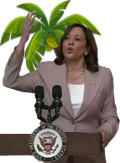Media literacy only seems to be taught on a textual level mostly, except for poetry. I remember learning about character arcs, symbolism and the cultural context of a story, but stuff like author intention and bias never made it into the classroom.
For example, I studied Some Like it Hot as my movie assignment in school. We learned about how the film portrayed the attitudes towards gender and money in the 20s, but never spent any time about what the point of that is. Our teacher told us that it pointed out sexism, but not that the movie itself was a criticism of gender norms.
Obviously there’s value in analysing the text of a story, but I think if you don’t analyse the intention and biases of the author as well, you’re not fully analysing anything. The Shrinking Shack podcast are really good at picking up on JK Rowling’s intentions, for example, not just politically, but also just in recognising what she thinks is cool. She clearly wanted to write a political spy story but was saddled with Harry Potter and didn’t want to continue writing children’s fantasy stories, so she pivoted to the spy storys in book five. That’s the kind of analysis and criticism that I was never taught
This is because real analysis of literary works always requires a political angle – even “aesthetic” art is political in its anti-politics.
The denial of the political at the secondary level (can’t indoctrinate kids!) is why media analysis and literary analysis is so truncated. Students essentially learn symbols without the context or political valence of those symbols (or in the most cursory way). So students are taught to look for symbols, but lack the political/literary/historical context as to why those symbols are meaningful.
After all, to do so involves immersing yourself in the world the text was made, so that you can recognize the ideological, historical, and political contexts that the author brings to bear on the work (and come out as symbols or other textual-rhetorical choices and effects).
This isn’t to say a student can’t also bring their own political context to bear – the classic example is understanding the racism of Shakespeare’s Shylock after the holocaust in a new way. But to truly recognize what’s going on in a text, you need a lot of context that the secondary environment (large class, quick timeframe, standardized tests) can’t provide. So students learn a kind of bastardized analysis that lacks the depth that you really need for this kind of thing.
Media literacy only seems to be taught on a textual level mostly, except for poetry. I remember learning about character arcs, symbolism and the cultural context of a story, but stuff like author intention and bias never made it into the classroom.
For example, I studied Some Like it Hot as my movie assignment in school. We learned about how the film portrayed the attitudes towards gender and money in the 20s, but never spent any time about what the point of that is. Our teacher told us that it pointed out sexism, but not that the movie itself was a criticism of gender norms.
Obviously there’s value in analysing the text of a story, but I think if you don’t analyse the intention and biases of the author as well, you’re not fully analysing anything. The Shrinking Shack podcast are really good at picking up on JK Rowling’s intentions, for example, not just politically, but also just in recognising what she thinks is cool. She clearly wanted to write a political spy story but was saddled with Harry Potter and didn’t want to continue writing children’s fantasy stories, so she pivoted to the spy storys in book five. That’s the kind of analysis and criticism that I was never taught
This is because real analysis of literary works always requires a political angle – even “aesthetic” art is political in its anti-politics.
The denial of the political at the secondary level (can’t indoctrinate kids!) is why media analysis and literary analysis is so truncated. Students essentially learn symbols without the context or political valence of those symbols (or in the most cursory way). So students are taught to look for symbols, but lack the political/literary/historical context as to why those symbols are meaningful.
After all, to do so involves immersing yourself in the world the text was made, so that you can recognize the ideological, historical, and political contexts that the author brings to bear on the work (and come out as symbols or other textual-rhetorical choices and effects).
This isn’t to say a student can’t also bring their own political context to bear – the classic example is understanding the racism of Shakespeare’s Shylock after the holocaust in a new way. But to truly recognize what’s going on in a text, you need a lot of context that the secondary environment (large class, quick timeframe, standardized tests) can’t provide. So students learn a kind of bastardized analysis that lacks the depth that you really need for this kind of thing.
We’re all